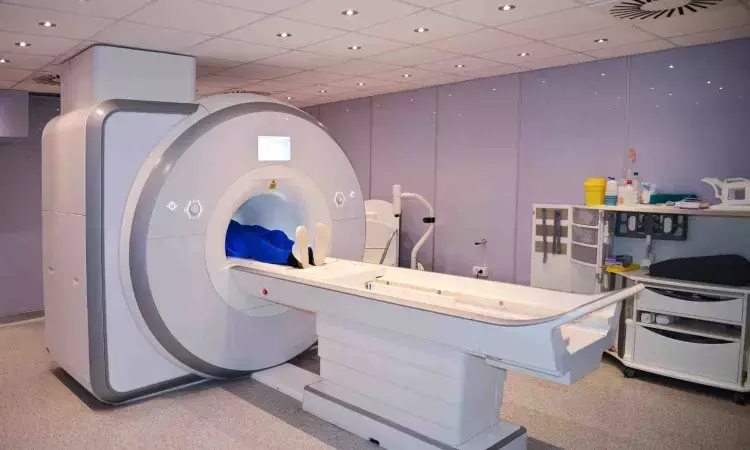- Home
- Medical news & Guidelines
- Anesthesiology
- Cardiology and CTVS
- Critical Care
- Dentistry
- Dermatology
- Diabetes and Endocrinology
- ENT
- Gastroenterology
- Medicine
- Nephrology
- Neurology
- Obstretics-Gynaecology
- Oncology
- Ophthalmology
- Orthopaedics
- Pediatrics-Neonatology
- Psychiatry
- Pulmonology
- Radiology
- Surgery
- Urology
- Laboratory Medicine
- Diet
- Nursing
- Paramedical
- Physiotherapy
- Health news
- Fact Check
- Bone Health Fact Check
- Brain Health Fact Check
- Cancer Related Fact Check
- Child Care Fact Check
- Dental and oral health fact check
- Diabetes and metabolic health fact check
- Diet and Nutrition Fact Check
- Eye and ENT Care Fact Check
- Fitness fact check
- Gut health fact check
- Heart health fact check
- Kidney health fact check
- Medical education fact check
- Men's health fact check
- Respiratory fact check
- Skin and hair care fact check
- Vaccine and Immunization fact check
- Women's health fact check
- AYUSH
- State News
- Andaman and Nicobar Islands
- Andhra Pradesh
- Arunachal Pradesh
- Assam
- Bihar
- Chandigarh
- Chattisgarh
- Dadra and Nagar Haveli
- Daman and Diu
- Delhi
- Goa
- Gujarat
- Haryana
- Himachal Pradesh
- Jammu & Kashmir
- Jharkhand
- Karnataka
- Kerala
- Ladakh
- Lakshadweep
- Madhya Pradesh
- Maharashtra
- Manipur
- Meghalaya
- Mizoram
- Nagaland
- Odisha
- Puducherry
- Punjab
- Rajasthan
- Sikkim
- Tamil Nadu
- Telangana
- Tripura
- Uttar Pradesh
- Uttrakhand
- West Bengal
- Medical Education
- Industry
Long-COVID patients show signs of inflammation on PET/ MRI scans: Study

Long-COVID patients show signs of inflammation on PET/ MRI scans suggests a new study published in the Jouenal of Nuclear Medicine.
The objective of this study is to describe the prevalence of inflammatory cardiopulmonary findings in a prospective cohort of long coronavirus disease (LC) patients. Methods: Subjects with a history of coronavirus disease 2019 infection, persistent cardiopulmonary symptoms 9–12 mo after initial infection, and a clinical assessment compatible with LC underwent cardiopulmonary 18F-FDG PET/MRI, dual-energy CT (DECT) of the lungs, and plasma protein analysis (subgroup).
A control group that included subjects with a history of acute severe acute respiratory syndrome coronavirus 2 infection but without cardiopulmonary symptoms at recruitment was also characterized. Results: Ninety-eight patients (median age, 48.5 y; 47% men) were enrolled.
The most common LC symptom was shortness of breath (80%), and 27% of participants were hospitalized. Of the subjects, 90% presented abnormalities in DECT, with 67% and 59% of participants demonstrating pulmonary infiltrates and abnormal perfusion, respectively. PET/MRI was abnormal for 57% of subjects: 24% showed cardiac involvement suggestive of myocarditis, 22% presented uptake reminiscent of pericarditis, 11% showed periannular uptake, and 30% showed vascular uptake (aortic or pulmonary).
There was no myocardial, pericardial, periannular, or pulmonary uptake on the PET/MRI scans of the control group (n = 9). Analysis of plasma protein concentrations showed significant differences between the LC and the control groups. Lastly, the plasma protein profile was significantly different among LC patients with abnormal and normal PET/MRI. Conclusion: In LC subjects evaluated up to a year after coronavirus disease 2019 infection, our results indicate a high prevalence of abnormalities on PET/MRI and DECT, as well as significant differences in the peripheral biomarker profile, which might warrant further monitoring to exclude the development of complications such as pulmonary hypertension and valvular disease.
Reference:
Prevalence of Persistent Cardiovascular and Pulmonary Abnormalities on PET/MRI and DECT Imaging in Long COVID Patients. Maria Giovanna Trivieri, Ana Devesa, Philip M. Robson, Sonali Bose, Busra Cangut, Steve Liao, Audrey Kaufman, Renata Pyzik, Valentin Fauveau, Jamie Wood, Aaron Shpiner, Edwin Yoo, Sarayu Huang, Claudia Calcagno, Venkatesh Mani, Sahityasri Thapi, Johanna Contreras, Kai Nie, Seunghee Kim-Schulze, Sacha Gnjatic, Miriam Merad, Munir Ghesani, David Putrino, Adam Jacobi, Donna Mancini, Charles Powell and Zahi A. Fayad. Journal of Nuclear Medicine April 2025, jnumed.124.268980; DOI: https://doi.org/10.2967/jnumed.124.268980
Dr. Shravani Dali has completed her BDS from Pravara institute of medical sciences, loni. Following which she extensively worked in the healthcare sector for 2+ years. She has been actively involved in writing blogs in field of health and wellness. Currently she is pursuing her Masters of public health-health administration from Tata institute of social sciences. She can be contacted at editorial@medicaldialogues.in.
Dr Kamal Kant Kohli-MBBS, DTCD- a chest specialist with more than 30 years of practice and a flair for writing clinical articles, Dr Kamal Kant Kohli joined Medical Dialogues as a Chief Editor of Medical News. Besides writing articles, as an editor, he proofreads and verifies all the medical content published on Medical Dialogues including those coming from journals, studies,medical conferences,guidelines etc. Email: drkohli@medicaldialogues.in. Contact no. 011-43720751


